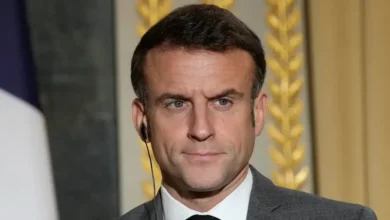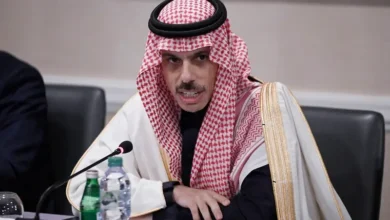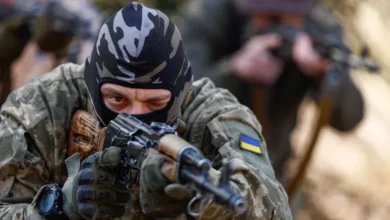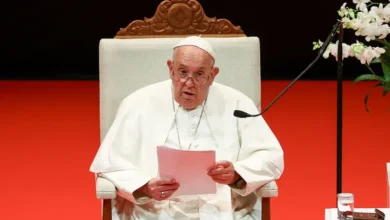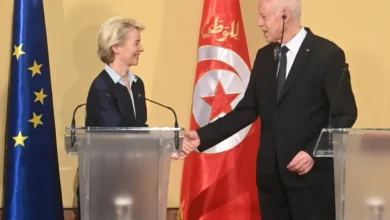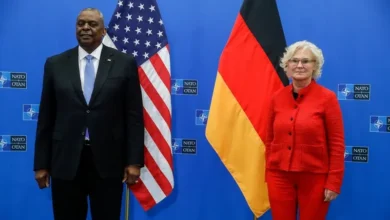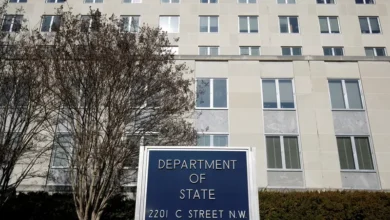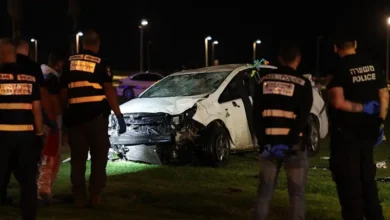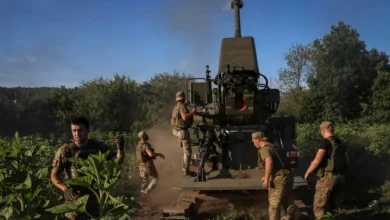Is Russia’s assault on northeastern Ukraine already losing steam?
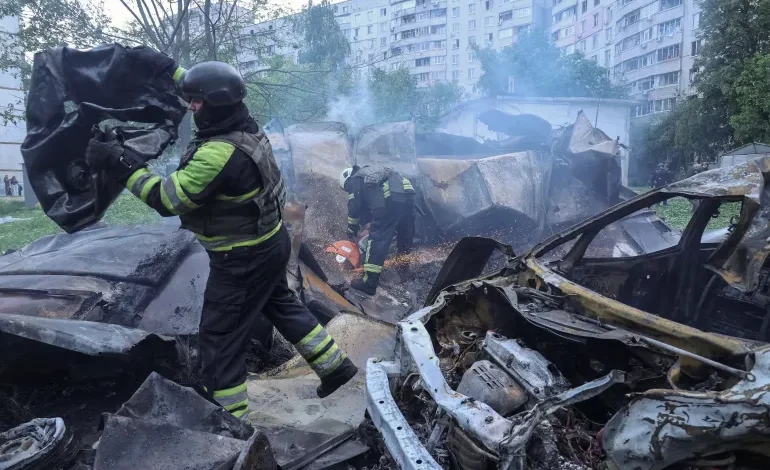
Because of the incessant, crackling cannonade around him, the police officer had to yell.
“The enemy is taking positions on the streets of Vovchansk, so people, do get evacuated,” the bearded officer in a flak jacket and helmet urged residents of the Ukrainian town, which is near Russia’s border.
His call was filmed and posted to Telegram on Wednesday. As Russia’s war on Ukraine escalates, it has been viewed more than 13,000 times since.
Vovchansk is an industrial town in the northeastern Kharkiv region that sits just 5km (3 miles) away from the Russian border and has been under attack since Friday.
That’s when Russian forces began their two-pronged raid on the region and seized almost a dozen villages within days.
With its apartment and factory buildings that can be defended by small groups of servicemen, Vovchansk is a harder nut to crack.
The Russians are still trying to seize an unused airfield and Soviet-era slaughterhouse that could serve as a base for further advancement.
The second direction of their offensive began in the border town of Liptsy, about 50km (31 miles) west of Vovchansk.
It sits on a highway leading to the regional capital, also called Kharkiv.
Ukraine’s second-largest city with a pre-war population of 1.5 million, Kharkiv has been bombarded almost non-stop in recent months.
So far, the raid is Russia’s largest ground attack on Ukraine since August 2022, when the Ukrainian military kicked out the invaders from most of the Kharkiv region.
“This is a successful combat reconnaissance, they advanced on a tactical level,” Lieutenant General Ihor Romanenko, a former deputy chief of Ukraine’s general staff of armed forces, told Al Jazeera.
Russian President Vladimir Putin said Moscow wants to create a “sanitary zone” in Kharkiv to protect the Russian region of Belgorod that lies north of it and has been heavily shelled by Ukrainian forces.
And even though Ukrainian intelligence reported weeks ago that the Russians would attack the region, Ukrainian forces failed to create a stable defence line to prevent the invasion, Romanenko said.
“The situation there is difficult,” he said.
But so far, the Russians don’t seem to have enough forces – at least 150,000 servicemen are needed to siege the city of Kharkiv as their current contingent along the border is about three times smaller, Romanenko said.
Moscow, however, is conducting a “hidden mobilisation” of hundreds of thousands of men and may deploy larger forces to seize Kharkiv by late May or early June, he said.
“We can gather resources, form a defence system and thwart their plan of an offence,” he said.
Moscow’s push in Kharkiv may seem concerning, but “given the challenges Russia faces they are unlikely to lead to operationally important penetration and exploitation”, retired NATO general Gordon “Skip” Davis Jr told Al Jazeera.
Russia has employed a significant number of combat vehicles in the Kharkiv direction supported by intense air support with the apparent attempt to fix Ukrainian forces in the north to allow advances to the south, he said.
Russia’s aerial superiority
One of the factors of their success is aerial superiority undisputed since the war began in 2022.
The ground assault is backed by Russian bombers that throw heavy glide bombs capable of destroying even the most fortified buildings.
These bombs played a crucial role in Moscow’s recent gains in the eastern Donetsk region.
Ukraine got rid of most of its Soviet-era air force, transferring all of its strategic bombers to Russia in the late 1990s as payment for natural gas debts.
Western powers agreed to supply several dozen F-16 fighter jets, but the first six are only expected in summer.
Another great hindrance is a taboo on the use of NATO-supplied weaponry on Russian territory as Western leaders are afraid of antagonising Putin.
